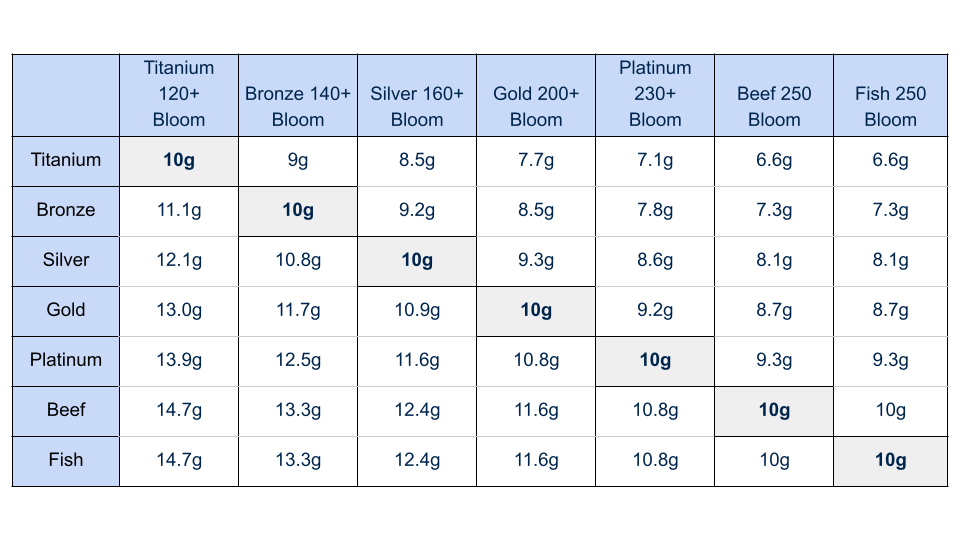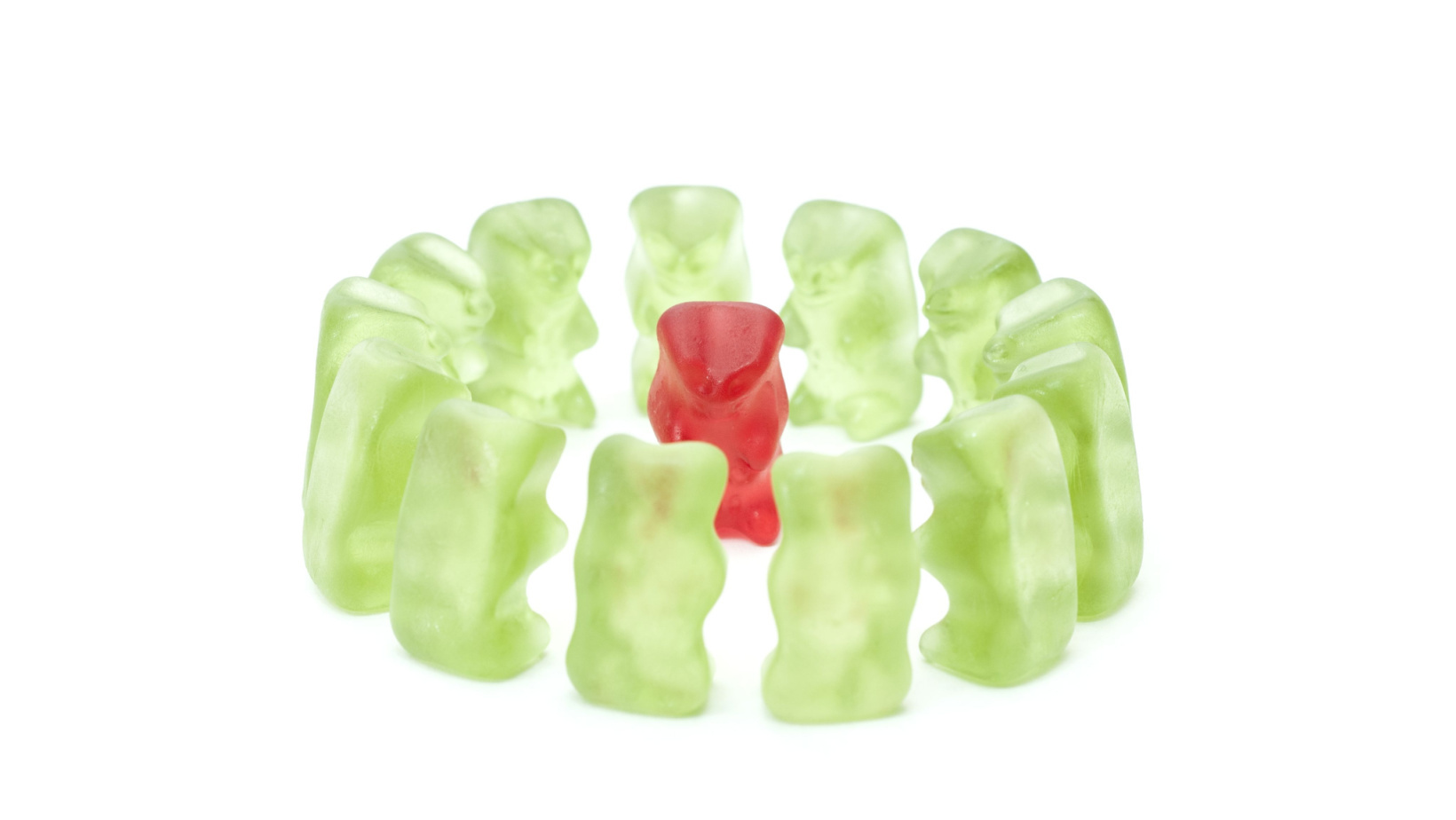| 1. Gummy is Too Soft |
| 2. Gummy Has Hard Bits |
| 3. Gummy is Sweating/Wheeping |
| 4. Adding Oils |
| 5. Adding Alcohol |
| 6. Gelatin Conversion Chart |
| 7. More Gummy Course Content |
Gummy is Too Soft
When the gummy is too soft it generally means that the amount of gelatin in the recipe is too low, or the ratio of water is too high. If you are using sheet gelatin, make sure any excess water from blooming is removed prior to adding the gelatin.
It can be difficult to increase the amount of gelatin in a recipe without increasing the water. But a good work around for this is to use an immersion circulator. Heating the gelatin in a bag at 150°F with a small amount of water will allow the gelatin to bloom and melt.
This can be added to the rest of a recipe at this point without the fear of having a soft gummy.
Gummy Has Hard Bits
If You find hard pieces in your gummies this is commonly caused by gelatin that is not fully bloomed.
If you are using sheet gelatin be sure to separate all of the sheets individually before blooming in water. If you are using powdered gelatin make sure that the surface area of the water is wide enough for you to sprinkle all of the gelatin without it piling up and becoming clumpy, do not dump in the gelatin in one lump.
Gelatin is completely hydrated when it is soft and pliable. Always hydrate completely before adding gelatin to a recipe. If you are having issues with hydrating your gelatin properly you can use the immersion circulator method above.
Gummy is Sweating or Weeping
Gelatin gummies can have a tendency to sweat or weep in the first few days after they are made. As the gummy dries the proteins will tighten, squeezing out any excess water.
The first thing you can do when attempting to prevent weeping would be to get the perfect ratio of gelatin, water, and sugar. This will allow for just enough water to be retained in the mixture and not purge once it begins to dry. The next thing you can do is “cure” the gums after they are removed from the molds. The best way to do this is in a dehydrator on its lowest setting for a few hours or in a refrigerator uncovered.
If you are still noticing some weeping and it is causing issues then you may need to look in to using a coating on the outside of the gummies. Some gummies work well with sugar and citric acid on the outside. Although sugar and citric acid will sometimes draw more moisture out. An alternative to this is to use a mixture of neutral flavored oil and carnuba wax. 90% oil and 10% carnuba wax mixture will coat the gummies and keep them separate as well as prevent weeping. This mixture can be poured on the gummies in a tumbler after they have been dried.
Adding Oils
There are several ways to add oils to a gummy. Simple oils such as flavor oils can be mixed in very easily before boiling. A more hydrophobic oil or fat may need an emulsifier to properly distribute the oil. Liquid soy lecithin, liquid sunflower lecithin, or polysorbate 80 are all great emulsifiers. Each one of these ingredients will help distribute the fat during the cooking process and keep them emulsified. Mix very thoroughly to ensure that the oil won’t separate once cooled.
Adding Alcohol
The best way to add alcohol to a gummy would be to use Instagel. Instagel is a cold soluble gelatin. This works best with alcohol since it does not require heating. The heat would burn off the alcohol before the gummies have a chance to set, so the gummy must be cooled to 140F before adding alcohol if you are not using Instagel. To learn more about Instagel gummies, follow this link.
Gelatin Conversion Chart
You may come across instances where you only have access to a specific type of gelatin. Use this chart as a way to replace one type of gelatin for another. The top row is the gelatin that you currently have, and the left column is the gelatin that you are looking to replace in a recipe. Keep in mind that gelatin substitution only affects the texture of the gummy. Using a lower grade of gelatin in place of a higher grade of gelatin will still result in less clarity and duller flavor.
For example if a recipe is calling for 10 g of 230 bloom platinum gelatin but all you have on hand is 160 bloom silver gelatin. Scan the top row until you find silver gelatin and then match it up with the platinum in the left column and you should have 11.6 g. This is what you will need to replace the ingredients in the recipe.



